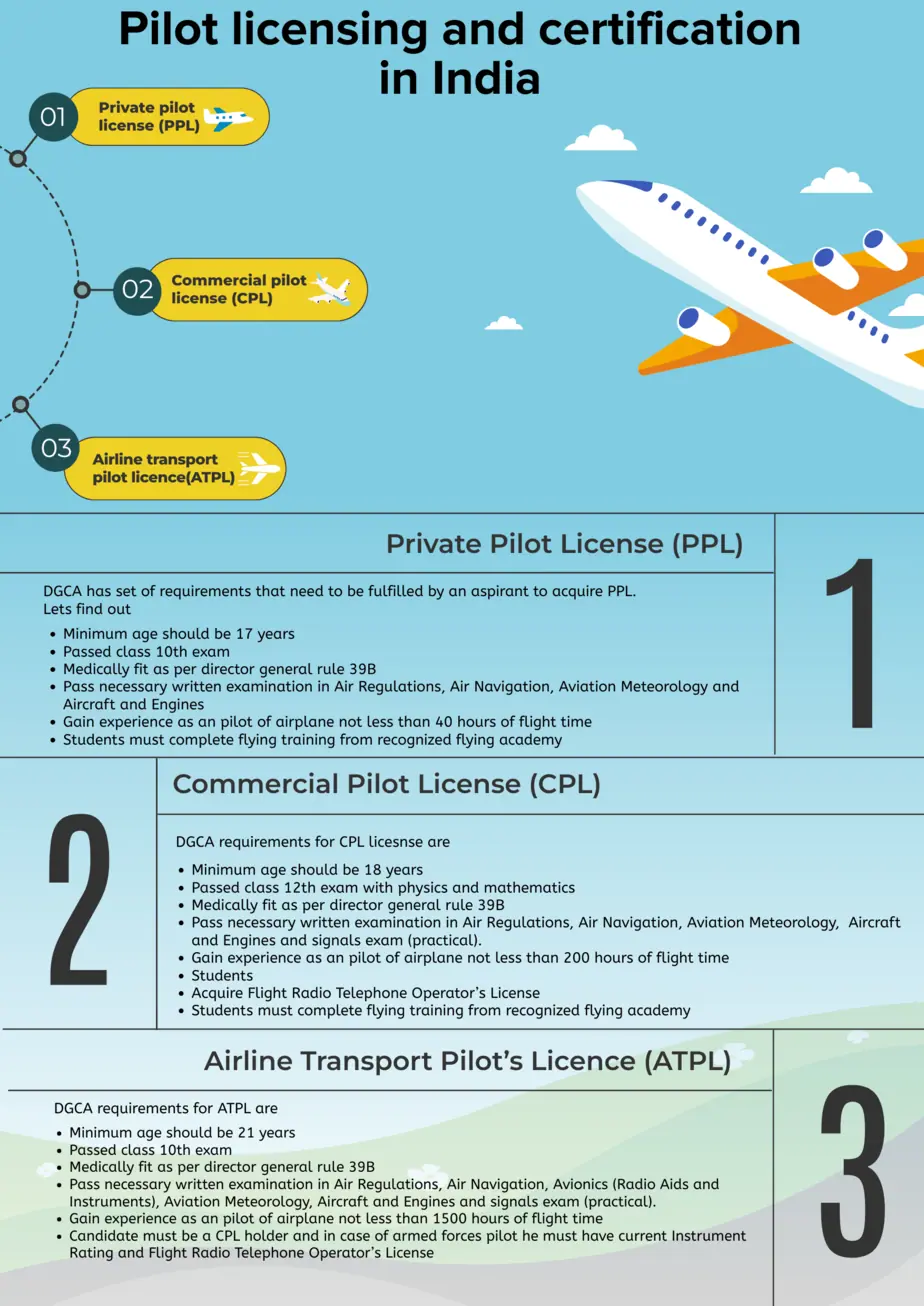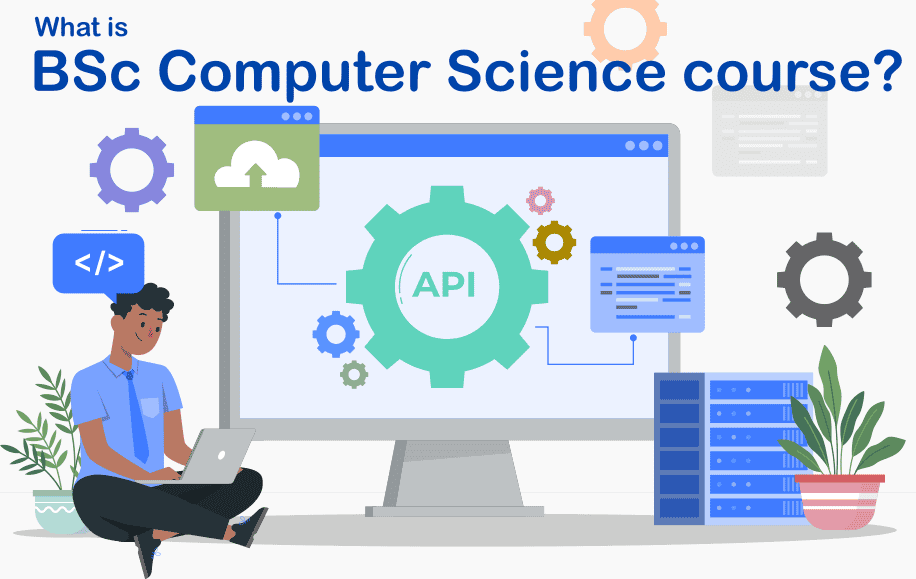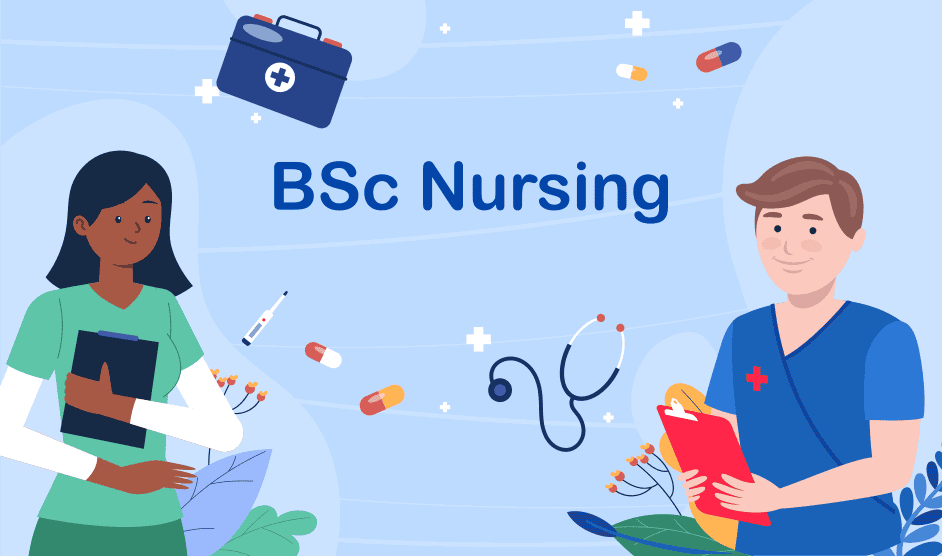Can you picture yourself confidently flying over the sky while sporting a stylish uniform? While enthralled by the breathtaking view from the cockpit, pilots are responsible for carrying travellers, staff, and freight safely on countless trips. To operate an aeroplane or helicopter, pilots must complete various training programs. They are trained, accomplished, and licensed professionals. Would you be interested in learning how to become a pilot after 12th? Then you are in a specially crafted article!
Choosing the right program might have a significant impact on your successful career, pilot is one of the best career choices for science students after passing 12th grade. Postsecondary pilot courses, once taught in a particular field, are now universally recognized as essential to the nation’s educational system. This article will examine a few of India’s best pilot training programs after completing the 12th grade at recognized universities.
Information about courses, Fees, pilot entrance exams, institutions, and work options upon graduation is available in this article.
- About a pilot, jobs and responsibilities
- Types of Pilot
- Eligibility to become a Pilot after 12th
- How to become a pilot after 12th
- Exams to become a pilot
- Important points for future pilots
- Pilot Licensing and certification in India
- List of Top 10 Flying Schools In India
- Jobs, Salaries, scopes
- Aviation courses for pilots
About a pilot, jobs and responsibilities
Pilots must complete many types of training to operate an aeroplane or a helicopter. They are highly trained, talented, and licensed professionals. Pilots are responsible for flying many aircraft, including mail, cargo, and passenger planes. Additionally, they are responsible for keeping up with the internal workings of an aeroplane and planning a flight while considering various variables, including weather and aircraft performance.
Pilots frequently perform the following duties:
- To manage the aircraft, use the controls in the cockpit and the outside landmarks.
- While in the air, keep a constant eye on the engines, fuel usage, and other aircraft parts.
- Use the radio equipment aboard the aircraft to speak with air traffic control.
- Respond to unforeseen circumstances, such as changes in the weather or mechanical failures.
- Examine the aircraft’s overall condition both before and after each flight.
- Ensure the conditions are suitable, including the fuel supply and the weather.
- Check to make sure the plane is balanced and not overloaded.
- As an airplane takes off, flies along predetermined paths, and lands, you may steer and control it.
- Construct a flight plan, then send it to the air traffic control.
Types of Pilot
A career as a pilot offers a wide range of potential sub-currents that it can further branch into. Students can select their primary field of study by considering each stream’s specializations and technical aspects. Aspiring pilots might choose from the following significant stratifications:
Commercial Pilots:
These individuals fly for airlines most frequently. They work primarily for airlines and fly passenger-carrying aircraft. An individual with a commercial pilot’s license can work as an airline pilot.
Private pilots:
These are pilots who operate their helicopters or aircraft. You must have a private pilot’s license to fly for yourself—successful individuals who pass personnel use these people as their staff.
Air Force Pilots:
These people fly innovative airliners for various Air Force missions. After passing the AFCAT exam and completing Air Force training, one is eligible to become an Air Force pilot.
Flight instructors:
They are used by academic institutions so that future generations might benefit from their knowledge. They train students to fly.
Eligibility to become a Pilot after 12th
Students who meet the educational organization’s or institution’s requirements can register for aviation courses. To pursue a career as a pilot, the following conditions must be satisfied:
- Aspirants must be at least 17 years old and have the required academic qualifications. A minimum 10+2 exam, and according to the DGCA, no legislation specifies the required percentage. However, this may differ depending on the institute’s particular requirements.
- Prospective pilots must have a medical certificate, that is, Class 2 and Class 1 from DGCA, to confirm that they meet the essential health standards.
- You must complete the PCM Intermediate Physics, English, maths, and Chemistry subjects. Candidates not enrolled in a science program can learn Maths, Physics, and English independently through the National Institute of Open Schooling.
How to become a pilot after 12th
In India, there are three ways to become a pilot: first the conventional way, second the Cadet pilot program offered by Indigo and SpiceJet and third joining the Indian Air Force. The study course is the same in both. We will be discussing the conventional way to become a pilot after the 12th.
The major difference between conventional and cadet programs is the fee structure and the minimum required percentage of 12th. To join a cadet pilot program, airlines conduct tests and interviews.
Now, coming to the conventional way, students aspiring to become pilots have to fulfil the minimum eligibility criteria described above. We have curated below the detailed steps of the procedure on how to become a pilot after the 12th, which will help students achieve their pilot dream.
1) Medical Fitness
- DGCA has certain guidelines for the fitness of Pilots. It’s divided into two types: Class 1 and Class 2.
- According to DGCA, class 2 medical certification is mandatory for SPL and PPL.
- After that, Class 1 medical certification is mandatory for CPL and ATPL.
2) Pick a Flight Training Centre and qualify DGCA exam
- We recommend you clear the necessary DGCA exams before joining the Flying school; although this is not mandatory, it is your choice to clear before or after joining the flying school.
- With this strategy, the students would be guaranteed an in-depth understanding of flying and a solid foundation to build their careers.
- Among the top aviation schools in India are the National Flying Training Institute, Rajiv Gandhi Academy of Aviation Technology, Bombay Flying Club, and Indira Gandhi Rashtriya Uran Academy.
- There are good opportunities abroad as well. Fees are more or less the same in India and overseas.
3) Gain knowledge and flying hours
- After joining the training school and clearing the institute-level basic exam, aspiring pilots are awarded Student pilot license (SPL)
- The two most important phases to becoming a pilot are obtaining dynamic experience and racking up flying hours.
- A Private Pilot License can be obtained after gaining 40 hours of flying, fulfilling all the criteria stated by DGCA for PPL. But PPL gives authority to fly the aircraft as a hobby without taking any monetary benefits.
- A Commercial Pilot License(CPL) is a must to join airline industries and fly commercial aircraft as a pilot and get paid. The DGCA requirement for CPL is certainly more rigorous, and it requires 200 hours of flying.
4) Complete all training and exams
- Students must successfully finish their required training and clear the necessary DGCA exams either before or after flight time training.
- Once they have accumulated the required hours and cleared all exams, students can apply for CPL.
- After the issuance of CPL, the license holder can work in the airline industry as a pilot.
5) Experience as an airline pilot
- More hours of flight time is the major factor that affects promotion from first officer to captain.
- CPL holders with 1500 hours of flight time can only get an Airline Transport Pilot’s Licence (ATPL) as per DGCA, which is mandatory to become a captain.
- To assist pilots in honing their abilities and advancing their careers, the International Federation of Airline Pilots Associations (IFALPA) and the Aircraft Owners and Pilots Association (AOPA) provide educational seminars and webcasts.
How many years to become a pilot after 12th: It could require up to 24-36 months to complete the CPL training program.

Exams to become a pilot
Students who wish to fulfil their pilot dream by joining the Indian Air Force have to clear entrance exams. In India, students have the choice to take several entrance exams, including. Please check the eligibility criteria for the exams mentioned below as the Indian Defence Services has strict age and education criteria.
- AFCAT
- CDSE
- NDA
If you are going through a flying academy or pilot program, then clear the necessary DGCA exams, which are conducted 4 times a year.
- Air navigation
- Air regulation
- Meteorology
Important points for future pilots
- Always reach the aviation school or DGCA and learn more about the requirements for obtaining a pilot’s license. You would not like to commit a mistake where everything is calculated in hours where a single mistake is a costly affair.
- Pursuing CPL from abroad is a good option where you get 250 hours of flight time, and the duration of completing the course is comparatively less than in India. Thereafter, you can convert your foreign CPL to an Indian CPL.
- Pilots with CPL holders can extend their knowledge and expertise by going for Type Rating, which adds additional experience with additional cost on specific airlines such as A320, B737, etc. The duration of the certification will be mostly 45-90 days. The Type Rating course is a completely individual choice; either you can do it after qualifying for CPL or after getting employed by an airline.
- The cost to get CPL is, on average, 35-40 lakhs in India; further, for Type rating, it depends on aircraft type, but again, it will cost you another 15-20 lakhs.
- The airline cadet pilot program by Indigo and Spicejet charges 1 crore rupees for CPL and relevant type rating. The student must have PCM and English in grade 12 and score 51% to join the program in Indigo and 60% to join the program in Spicejet.
- Airlines demand that pilots complete psychological and aptitude exams to be hired. After being assigned, pilots must spend extra weeks learning and flying to gain experience as co-pilots.
Pilot Licensing and certification in India
You are seeing PPL, CPL, ATPL very frequently. These are the pilot license with different eligibility criteria issued by DGCA. We found a very good infographic describing the Pilot licenses available in India.

List of Top 10 Flying Schools In India
Here is a list of India’s top 10 flying schools.
- Indira Gandhi Rashtriya Uran Akademi (IGRUA)
- Madhya Pradesh Flying Club (MPFC)
- National Flying Training Institute (NFTI)
- Ahmedabad Aviation & Aeronautics Ltd. (AAA)
- Bombay Flying Club
- Rajiv Gandhi Aviation Academy
- Government Flying Training School
- OFAA – Orient Flights Aviation Academy
- Indian Aviation Academy
- Adventure Flight Education Private Limited, Bangalore
Jobs, Salaries, scopes
Income of a Pilot in India
Now you are aware of the prerequisites on how to become a Pilot after 12th in India. It is also crucial to take note of the pay scale and income structure of the pilot after following the completion of CPL training.
The pay for a pilot in India falls into the following categories, which must be made explicit.
- Sector-Specific Salary
- Specialization-Specific Salary
The amount of money a Fresher pilot makes in India may be found in the table below. Let’s start by understanding each of them.
Sector-wise Salary of Pilots:
| Sector Name | Annual Salary |
| Commercial/Private | Rs. 15 lakhs to Rs. 50 lakhs |
| Government (IAF) | Rs 4.5 lakhs to Rs. 9 lakhs |
Job-wise Salary of Pilots:
| Pilot Jobs | Annual Salary |
| Commercial Pilots (Junior First officers) | Rs. 18 lakhs to Rs. 25 lakhs |
| Private Pilots | Rs. 12 lakhs to Rs. 15 lakhs |
| Flight Instructors | Rs. 3 lakhs to Rs. 6 lakhs |
With hours of experience, at least 3000 hours, the designation you will get is Captain, who gets a salary of 5-8 lakhs per month.
- The pilot industry is well-known for its prestige, difficulties, and bright future additionally pilots are also regarded as highly qualified professionals in their area. They can seek chances with domestic and foreign airlines that are both state-owned and privately owned.
- The typical Air India pilot salary in India for a Junior first officer is 2.35 lakhs per month, the first officer’s salary is 3.45 lakh, and the Captain’s salary is 4.75 lakhs per month.
- A First officer pilot who works at an Indigo gets a pay of 2.2 lakhs per month. Overall Indigo pilot salary is very competitive and good compared to other private airlines.
Top Recruiters for Pilots
With annual compensation varying between INR 15 to 30 lakhs, the top airlines listed below seek to recruit individuals with Commercial Pilot licenses.
- Air Heritage
- IndiGo
- Air India
- India Jet Airways
- Air Costa
- Air Deccan
- Air India Charters Ltd
- Alliance Air
- SpiceJet
- AirAsia
Aviation courses for pilots
Here is a list of undergraduate and postgraduate aviation programs that can also be pursued along with a pilot course. These courses are not mandatory to become a pilot but these courses are good as it opens opportunity in different department. Apart from becoming a pilot, the courses listed below can give you the opportunity to work in ARAI. You can work in ATC, airline management, ground staff, cargo manager, etc.
Aviation UG Courses List:
| Courses | Annual Fees (INR) |
| B.Sc. Aviation | Rs. 65k |
| BBA Aviation Operations | Rs. 78k |
| BBA Airport Management | Rs. 1 lakh |
| B.Sc. Aeronautical Science | Rs. 90k |
| B.E. in Aeronautical Engineering | Rs. 3 lakh |
| BMS in Aviation Management | Rs. 80k |
| B.E. Aerospace Engineering | Rs. 3.75 lakh |
| B.Tech Aeronautical Engineering | Rs. 2 lakh |
| B.Tech Avionics Engineering | Rs. 90k |
Aviation PG Courses List:
| Courses | Annual Fees (INR) |
| M.Sc. Aerospace Engineering | Rs. 2 lakh |
| MBA in Aviation | Rs. 10.50 lakh |
| M.Tech. Avionics Engineering | Rs. 8.75 lakh |
| M.E. Aerospace Engineering | Rs. 5.90 lakh |
| M.Tech. Aerospace Engineering | Rs. 2 lakh |
| M.Tech. Aeronautical Engineering | Rs. 9.90 lakh |
| M.E. Aeronautical Engineering | Rs. 8 lakh |
| M.Sc. Aeronautical Science | Rs. 7.35 lakh |
| M.Sc. in Aviation | Rs. 6 lakh |
Conclusion
India has various opportunities for pilots due to its quickly growing sector. Pilots enjoy flexible work schedules, stable employment, endless training opportunities, travel discounts, and other perks in addition to a well-paying vocation. India has a sizable need for air travel, therefore demand is expected to grow in the future. There is never a better moment to start becoming a pilot than now!
For science students, we have curated the best course options, so do check that as well.




